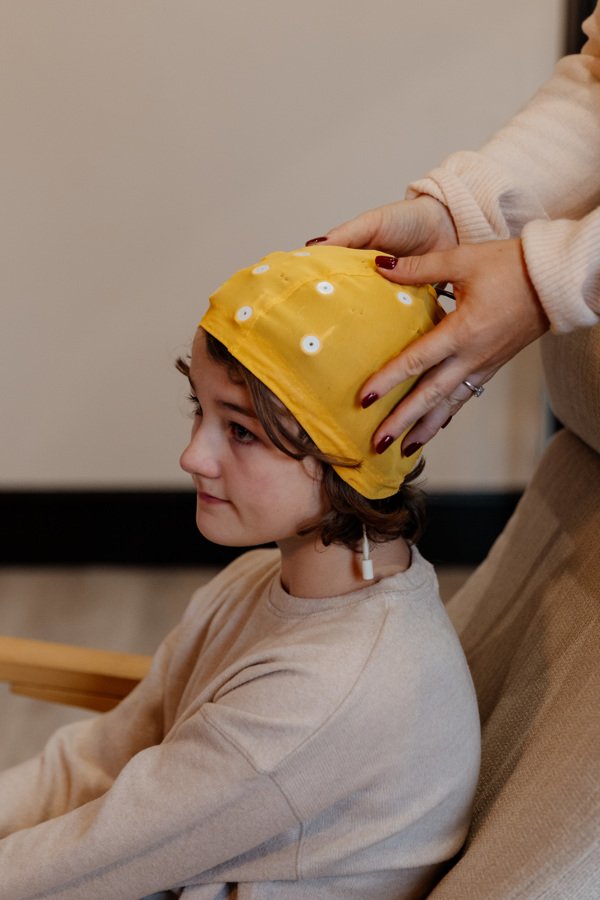Tips for parents: How to prepare your nervous child for their QEEG brain map
Many parents worry about the QEEG brain mapping process for their child, and have questions about whether or not their child will comply.
At Optiminds, we are familiar with this parental concern, and we have a great deal of experience working with children who are anxious about the brain mapping process.
As a parent, your support and guidance plays a crucial role in ensuring your child feels comfortable and relaxed during the QEEG appointment. At Optiminds, we work closely with parents to ensure they also feel comfortable, prepared, and *dare I say it*, excited about the opportunity to learn more about their child's brain.
Here are some helpful tips to assist your child in the QEEG process:
1. Open Communication
Initiate an open and honest conversation with your child about the QEEG assessment. Explain the process in a simple, age-appropriate manner. Assure them that it's painless, non-invasive, and that there's nothing to fear. At Optiminds, we often talk to children about the similarity between the QEEG cap and a swimming cap.
Answer any questions your child might have and encourage them to express their feelings or concerns.
2. Familiarize Them with the Environment
Before the appointment, show them photos of our practice at Optiminds to help your child to get acquainted with the surroundings. Familiarity often eases anxiety by making the environment less intimidating. You can find photos of our space here
3. Positive Reinforcement
Encourage your child by providing positive reinforcement. Praise their confidence before, during, and after the session. Positive affirmations can boost their confidence and make them feel supported. At Optiminds, we foster a strong relationship with each child that we work with, and ensure they feel comfortable and relaxed before we start their QEEG brain map.
4. Comfort
During the QEEG session, if needed, offer home comforts to redirect their focus away from any nervousness that may arise. Bring their favourite toys, books, or comfort blankets. Engaging in activities they enjoy can help keep their mind occupied and reduce anxiety.
5. Stay Calm and Supportive
Your demeanour can significantly impact your child's emotions. Try to be calm, composed, and supportive throughout the QEEG process. Your reassuring presence can provide immense comfort and stability, helping them feel safe and secure. If you have any concerns prior to your appointment with us, please get in touch here to discuss
6. Follow Their Pace
At Optiminds we will respect your child's pace and comfort level. If they need breaks during the session, we can allow this. We will never force or rush your child at any point during their sessions. Patience and understanding are key to helping them feel in control and comfortable throughout the QEEG brain mapping process.
7. Post-session debriefing
After the QEEG brain map, have a conversation with your child about their experience. Acknowledge their efforts, listen to their feelings, and address any concerns they might have. This debriefing can help them process their emotions and build confidence for future sessions.
8. Consult with us
Maintain open communication with your neurofeedback provider at Optiminds. Inform us about your child's anxiety and we will work collaboratively with you to develop strategies that can make the sessions more comfortable and beneficial for you and your child.
9. Encourage self-care
Teach your child self-soothing techniques they can use independently, such as deep breathing, visualization, or progressive muscle relaxation. These techniques empower them to manage their anxiety.


